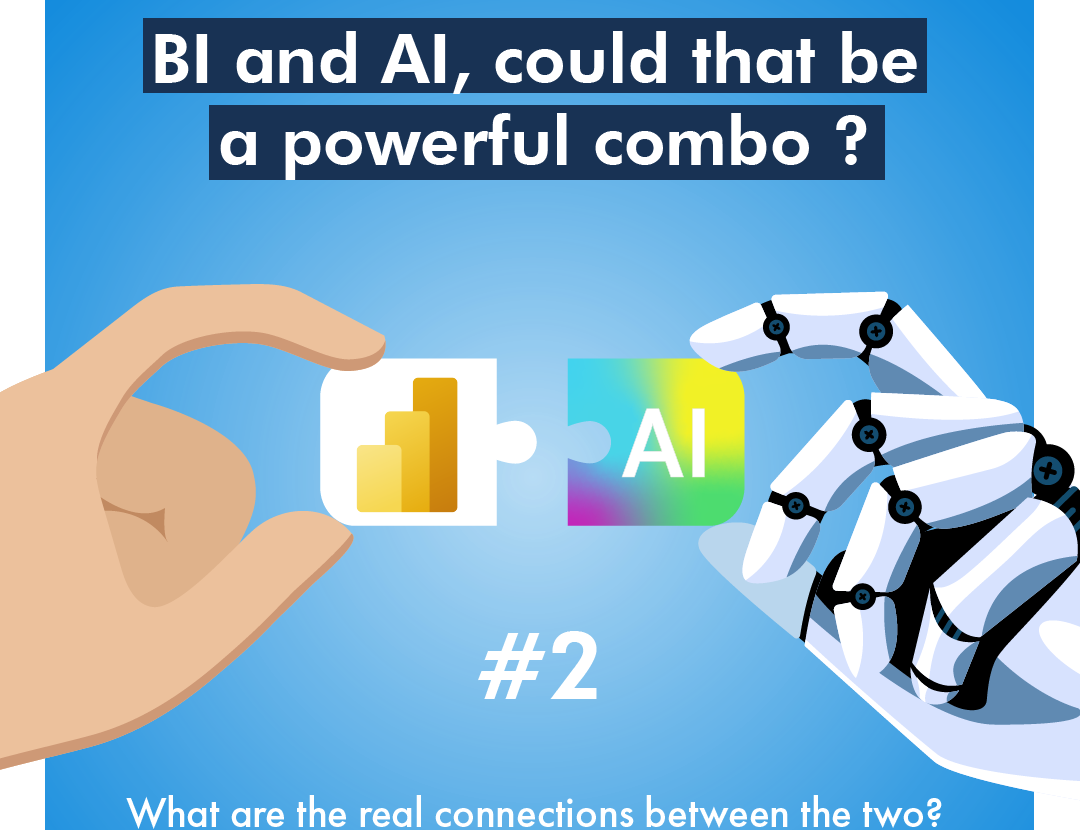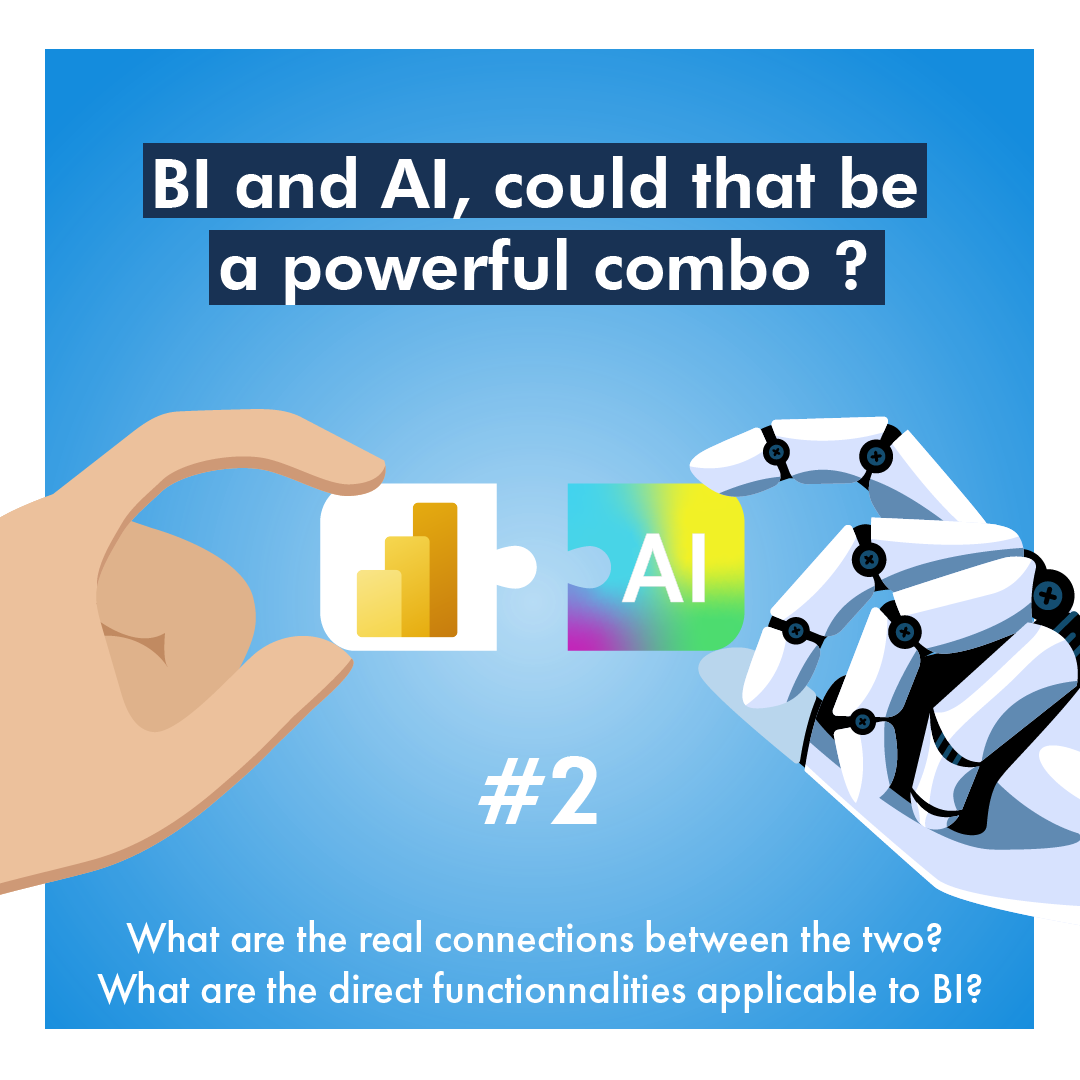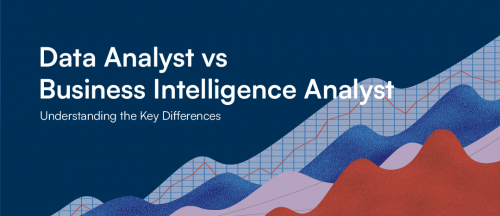

BI and AI, could that be a powerful combo ? Episode 2. A deep dive into the AI functionnalities within Tableau AI

In the realm of business intelligence (BI) tools, Tableau has established itself as a frontrunner, particularly with its integration of artificial intelligence (AI) with Tableau AI. This section explores the sophisticated functionalities of Tableau, focusing on its AI-driven features that revolutionize data analysis and decision-making.
Advanced Analytics Capabilities:
Tableau’s integration with advanced analytics techniques, such as machine learning algorithms, empowers users to extract actionable insights from data. With features like predictive analytics and clustering, organizations can uncover hidden patterns, predict future trends, and make data-driven decisions with precision.
Automated Insights:
Tableau AI offers automated insights that highlight key trends, outliers, and anomalies in the data. By analyzing large datasets and applying advanced algorithms, Tableau AI identifies patterns and correlations that may not be immediately apparent to users. These automated insights provide valuable starting points for further exploration and analysis.
Natural Language Processing (NLP):
With Tableau AI’s natural language processing capabilities, users can interact with their data using plain language queries. This intuitive interface allows users to ask questions and receive instant visualizations, without the need for complex queries or technical expertise. NLP empowers users across the organization to explore data and derive insights effortlessly.
Smart Recommendations:
Tableau AI generates smart recommendations to guide users in their analysis. These recommendations suggest relevant visualizations, insights, and data sources based on the user’s context and objectives. By leveraging machine learning algorithms, Tableau AI helps users make more informed decisions and discover insights they may have overlooked.
Explainable AI:
Tableau AI’s explainable AI capabilities provide transparency into the underlying algorithms and decision-making processes. Users can understand how AI models arrive at their conclusions, enabling them to trust the insights generated and make confident decisions based on data-driven evidence. Explainable AI promotes accountability and fosters trust in AI-driven analytics.
Integration with External Data Sources:
Tableau AI seamlessly integrates with external data sources, allowing users to enrich their analysis with additional datasets and sources of information. Whether it’s leveraging third-party data sources, APIs, or cloud-based services, Tableau AI enables users to access a wide range of data to enhance their analysis and decision-making.
Why AI’s functionalities are a benefit:
Enhanced Decision-Making Agility:
Tableau’s AI-driven functionalities enable organizations to analyze data faster and make informed decisions in real-time. This agility is crucial for adapting to rapidly changing market conditions and gaining a competitive edge.
Improved Accuracy and Precision:
The integration of AI algorithms in Tableau enhances the accuracy of insights by identifying patterns and trends that might be overlooked through manual analysis. This precision enables organizations to make data-driven decisions with confidence.
Democratization of Data Analysis:
Tableau’s intuitive interfaces and NLP features democratize data analysis, allowing users across various departments to explore insights without specialized technical skills. This accessibility fosters a culture of data-driven decision-making throughout the organization.
Efficiency in Data Preparation:
Automated data preparation with Tableau Prep saves time and resources, allowing users to focus on deriving insights rather than cleaning and integrating data manually. This efficiency accelerates the time-to-insight and improves overall productivity.
Navigating Risks in AI-Driven Tableau
While Tableau’s AI-driven functionalities offer immense potential for organizations, they also pose certain risks that need to be addressed. This section delves into the challenges and considerations associated with the integration of AI in Tableau.
Data Privacy and Security Concerns:
The increased reliance on AI for data analysis raises concerns about data privacy and security. Organizations must ensure that sensitive information is protected and that appropriate security measures are in place to prevent unauthorized access or breaches.
Interoperability and Integration Challenges:
Integrating Tableau with other systems and data sources can present interoperability challenges. Organizations need to ensure seamless integration and compatibility to derive maximum value from AI-driven insights.
Potential Bias in AI Algorithms:
AI algorithms in Tableau may be susceptible to biases present in the data used for training. Organizations must be vigilant in identifying and mitigating biases to ensure fair and unbiased decision-making.
Skillset Transformation and Training Needs:
The adoption of AI in Tableau requires a shift in the skillsets of users. Organizations must invest in training and development programs to equip users with the necessary skills to leverage AI-driven functionalities effectively.
Conclusion
As organizations leverage Tableau’s AI-driven functionalities to gain insights and make decisions, it is crucial to address potential risks proactively. By implementing robust governance frameworks, ensuring data privacy and security, and investing in continuous monitoring and education, organizations can maximize the benefits of AI while mitigating associated risks. With careful consideration and ethical use, Tableau’s AI capabilities can empower organizations to thrive in the data-driven era.
If used properly, Tableau AI enables organizations to derive deeper insights, make more informed decisions, and drive business outcomes. AI must not be feared, but used properly.
https://www.tableau.com/products/tableau-ai
https://www.biztory.com/blog/tableau-pulse-tableau-ai-a-complete-guide
https://www.linkedin.com/pulse/tableau-gpt-power-your-business-decisions-generative-ai-skyplanner/






